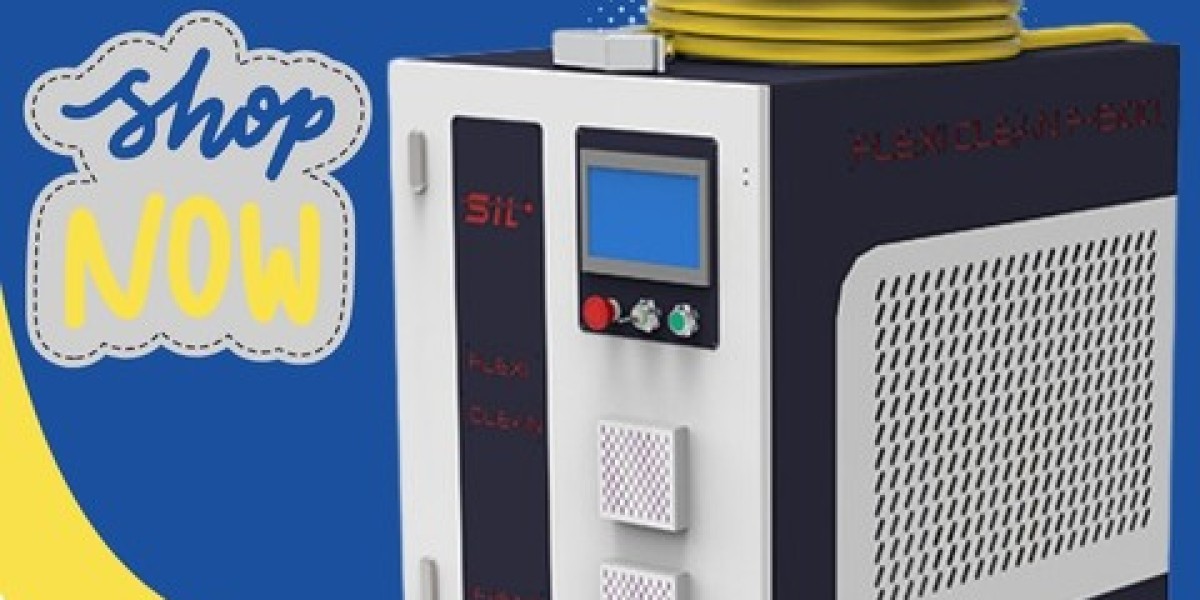The laser rust removal tool works by directing a focused laser beam onto a metal surface. The beam absorbs and vaporizes rust, paint, or unwanted residue without damaging the base material. This method is based on the principle of laser ablation, where contaminants absorb the laser energy faster than the clean metal underneath, allowing selective cleaning.
This tool doesn’t rely on chemicals, abrasives, or mechanical friction. Instead, it uses controlled light energy to remove impurities. As industries move towards cleaner and more sustainable methods, this technology is becoming a cornerstone for efficient metal maintenance and restoration.
Industrial Need for Laser-Based Cleaning
Rust is one of the most persistent challenges across metal industries — from automotive to aerospace, manufacturing to shipbuilding. Traditional cleaning methods like sandblasting, chemical dipping, and grinding create waste, require protective measures, and often damage surfaces. The laser rust removal tool eliminates these drawbacks by offering a non-contact, dry, and residue-free process.
Manufacturers use it to clean molds, restore machine parts, and prepare metal surfaces for coating or welding. Repair centers apply it to remove oxidation from car bodies, frames, and tools without deforming or thinning the metal. It has also become a standard in the restoration of historical artifacts, where maintaining material integrity is essential.
How the Laser Rust Removal Tool Works in Practice
When the laser beam hits the rusted surface, it heats and vaporizes the rust layer in a fraction of a second. The system’s parameters — such as pulse duration, frequency, and beam intensity — can be adjusted depending on the surface type and level of contamination. This ensures precision and uniform cleaning, even on complex geometries or sensitive materials.
The tool is often handheld or mounted on robotic systems. Handheld versions allow flexibility in workshops or field operations, while automated systems handle large-scale cleaning in manufacturing lines. The beam can be directed with extreme accuracy, removing only the top layers of corrosion without heating the base metal excessively.
Use Across Different Industries
The laser rust removal tool is not limited to one sector. Its adaptability makes it a preferred choice across multiple industries:
Automotive Manufacturing: Used to clean car parts, engine blocks, and molds before coating or welding.
Aerospace Industry: Applied for precise surface cleaning where even minor damage can impact performance.
Shipbuilding and Marine Maintenance: Removes corrosion from hulls and deck parts exposed to saltwater.
Electronics and Energy: Used for cleaning conductive surfaces without introducing contaminants.
Cultural Restoration: Safely removes oxidation and pollution residues from historical metal artifacts.
Each application benefits from the precision, repeatability, and minimal waste the laser process offers.
Environmental and Operational Impact
The growing use of laser rust removal tools reflects the industrial shift toward sustainable and cost-effective methods. Since it does not use solvents or chemicals, the process generates no secondary waste, fumes, or hazardous byproducts. Workers face fewer health risks, and cleanup time is reduced.
Operational efficiency also improves — the process requires minimal setup, and once calibrated, it delivers consistent results across different surfaces. Maintenance is low, and energy consumption is optimized through advanced fiber laser systems that convert most input energy directly into cleaning power.
Integration with Modern Manufacturing
In automated production lines, laser rust removal tools can be integrated with robotic arms and computer vision systems. These setups detect rusted areas in real-time and clean them precisely without human intervention. The digital control of laser parameters ensures consistent quality, even during continuous operation.
This integration supports Industry 4.0 initiatives, where automation, smart control, and data-driven optimization play major roles. With such systems, factories reduce downtime and improve quality control while minimizing labor costs and rework.
Safety and Handling Considerations
Using a laser rust removal tool requires basic safety practices to protect operators and the environment. Proper protective eyewear is essential to shield eyes from reflected beams. Enclosed cleaning chambers or fume extraction systems are often used in industrial setups to maintain clean air.
Operators are typically trained to handle equipment safely, adjusting laser parameters according to material types and cleaning needs. The precision of modern laser systems minimizes risks, ensuring that only the targeted surface layer is affected.
The Role in Metal Surface Preparation
Before welding, coating, or bonding, metal surfaces must be free of rust, paint, and oil. The laser rust removal tool ensures surfaces are perfectly clean, enhancing adhesion and preventing defects in subsequent processes. Unlike mechanical grinding, it doesn’t create micro-scratches or leave residues that could weaken coatings.
This makes it an ideal solution for industries where surface quality defines the product’s reliability — for instance, aerospace components, turbine blades, or automotive frames.
Cost Efficiency and Long-Term Value
Although the initial investment in a laser rust removal tool can be higher than traditional cleaning systems, it delivers long-term savings. The absence of consumables like sand, chemicals, or brushes significantly reduces recurring costs. The tool’s durability, minimal maintenance, and high operational speed lead to a lower total cost of ownership.
Moreover, by extending the lifespan of cleaned components and reducing scrap rates, companies gain measurable economic and environmental advantages. The combination of precision and reliability contributes directly to productivity and sustainability goals.
Emerging Innovations in Laser Cleaning
The future of the laser rust removal tool lies in continuous innovation. Manufacturers are now developing systems with AI-powered sensors that automatically adjust laser intensity based on surface conditions. Portable units are becoming more compact and energy-efficient, allowing easier use in remote or field operations.
Hybrid systems that combine laser cleaning with inspection cameras are also emerging. These systems analyze the surface before and after cleaning, providing quality assurance in real time. Such advancements further enhance the versatility of laser-based rust removal technology.
Practical Applications in Everyday Use
Small workshops and maintenance teams increasingly rely on laser rust removal tools for regular upkeep of machinery, tools, and vehicles. The quick setup time and easy operation allow technicians to clean metal parts on demand, saving time that would otherwise be spent on chemical soaking or sandblasting.
In large manufacturing plants, automated laser cleaning stations are now common before coating or assembly stages. This ensures that every metal part entering the production line meets exact cleanliness standards, improving efficiency and product quality.
Environmental Sustainability and Waste Reduction
Laser cleaning represents one of the few industrial processes that aligns with green manufacturing principles. The laser rust removal tool operates without consumables, minimizes water use, and eliminates the disposal challenges associated with abrasive or chemical cleaning.
The absence of secondary waste means fewer pollutants enter the environment, and workplace conditions remain cleaner. As industries move toward stricter environmental regulations, adopting laser-based methods supports both compliance and corporate responsibility.
Final Thoughts
The laser rust removal tool stands as a practical and forward-looking solution for metal cleaning and surface treatment. It combines speed, accuracy, and environmental responsibility in one process. Whether applied in heavy manufacturing, precision engineering, or restoration projects, its impact is redefining how industries approach rust removal and maintenance.
As technology continues to evolve, the role of laser cleaning will expand even further — becoming not just a replacement for traditional methods but a standard practice for achieving cleaner, safer, and more sustainable metal surfaces worldwide.







